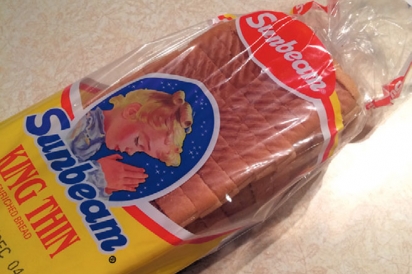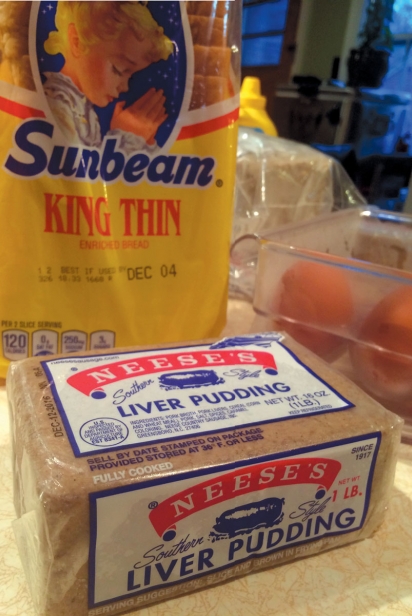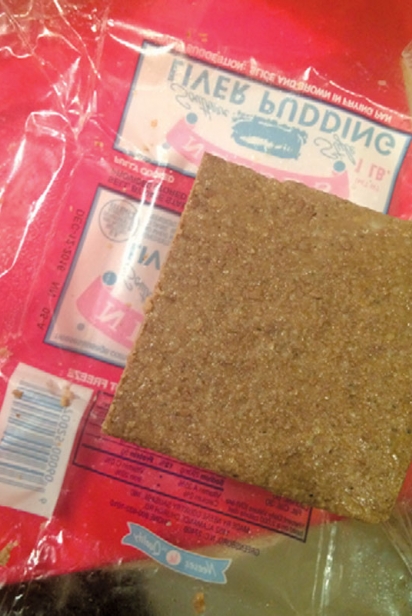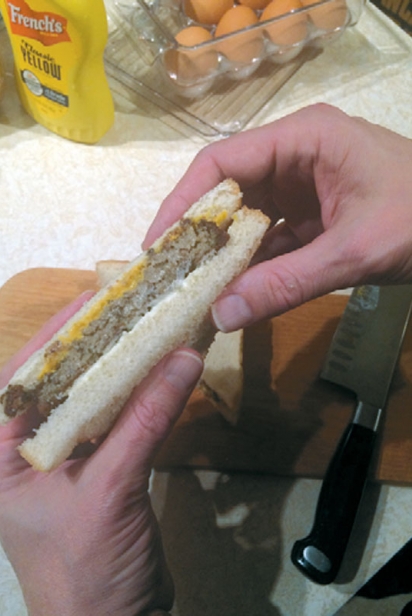LIVERMUSH, or Brave Eating in Blended Families
I am an adventurous eater. I always have been. It goes all the way back to when I was a small kid.
Dad is first generation Greek American. Pappou was born in Crete and Yiayia came from a little village outside Sparta. They came to the states when they were in their teens, meeting in Detroit’s Greektown.
At our loud, raucous family gatherings, everything revolved around food. Court was held in the kitchen as Yiayia directed the cooking and Pappou snuck tastes. There was no tolerance for picky eaters. Open your mouth to gripe and you quickly find it filled with a crumble of feta still wet from the brine or a shred of chicken being pulled for the avgolemono soup, while being asked that family dividing question of whether the soup should have rice or orzo this year? There was no right answer. You were either a heathen or a fool (to this day, I remain staunchly a fool… on this topic at least).
So, by age five I was plucking the mouth puckering salty kalamata olives from the dish on the kitchen table where Yiayia sat sentry, holding out her cupped hand for me to spit the pit into it every time I took one (almost as an offering), slurping down the manestra (as the first grandchild of this large clan, I was generally pleased to find the tiny orzo on my spoon… as my uncles grumbled) with the adults, surveying Christmas gifts while chewing on Yiayia’s hand rolled domaldes, and piling my own plate high with spanakopita and roasted lamb.
The secret that I stumbled onto was this: don’t be afraid of the weird colors, textures or names. Tasty pleasure is not just found in the obvious packages; it also lay hidden in little bundles wrapped in shiny dark green leaves.
But that is just half of the story. My mom’s people are very much not Greek. Coming from the foothills of North Carolina, they were decidedly country and decidedly Southern. While my holidays were filled with Greek fare, at home I enjoyed very different cuisine. Mom is a terrific cook, and like at the George family house, and there was little patience for finicky eaters, so early on, my brother and I happily ate dinners of chicken bog and gravy-soaked, country-style steak (don’t confuse it with the vastly inferior country fried steak), collards and black eyed peas stirred together and topped with vinegar, chopped white onions and crumbled cornbread. And at breakfast it was always a good day when we came in to find crisp rectangles of liverell* (pronounced liverale) on our plates. Despite that liverell was actually made of liver (generally known as culinary kryptonite for children), we could not get enough of it. It was meaty and spicy with a great exterior crispiness and just a touch soft in the center.
I was introduced to livermush as a breakfast protein. Pan fry it in bacon grease and dip it in the runny yolks of a sunny-side-up egg, crumble it into my grits, tuck a square into a biscuit with butter… I happily used it as the same sort of utility player as bacon or sausage, but once I discovered the beautiful simplicity of the livermush sandwich, my love truly blossomed.
Take two slices of white bread (we grew up eating Sunbeam), and slather one with French’s yellow mustard, the other with Duke’s mayonnaise.
Slice up a ripe, in-season beefsteak tomato and lay a couple slices atop the mayo-ed bread slice, then give it a grind of pepper and a shake of salt.
Hard fry one finger-thick slab of livermush to get a good crust on both sides (but leaving a touch of softness in the middle), place it atop the tomatoes and cap it with the mustard slice of bread.
For the uninitiated, livermush is a regional dish originating from the North Carolina piedmont, and they take it quite seriously. Two different towns even have their own Livermush Festivals (Marion hosts the Liver Mush Festival in June and in October Shelby presents the Mush, Music & Mutts Festival). It is essentially a paté (meat ground into a spreadable paste with additional flavorings) made with pork liver, pork meat, cornmeal, broth and spices. It hearkens back to the early days hog slaughtering on the family farm and wanting to use as much of the animal as possible, so they utilized the liver along with other scrap portions of meat.
There are recipes (including Ms. Dupree’s liverell recipe below) to make your own, but I’m not doing much hog slaughtering of late, and well…to be honest, I suspect that the process would probably spoil the charm for me. So I let the fine folks at Neese’s (Greensboro, NC) keep the mystery alive, and I buy my livermush at the grocery. There are other brands as well. Mack’s Liver Mush and Jenkins (both out of Shelby, NC) are tasty and available in the area, but I grew up on Neese’s so that is the one that tastes right to me (switching now would be as uncomfortable as wearing somebody else’s shoes… or switching from Duke’s to Hellman’s, or god forbid…Miracle Whip).
Other regions in the country offer their own versions of livermush. Liver pudding historically is a smoother textured product that does not use a cornmeal binder. Scrapple includes cornmeal but also other offal in addition to the liver (kidneys and whatnot). To me, they are both ersatz.
Ersatz or not, if I could get my nieces to try scrapple, I’d count it as a win.
*Researching this article, I found only one reference of the term “liverell” anywhere outside of Greene/Sanford family breakfast tables (Nathalie Dupree’s cookbook “New Southern Cooking” pg. 19-20 Knopf, 1986, ISBN: 0394558189). Talking it over with Mom, we came to the conclusion that liverell and livermush are essentially the same thing, and liverell was probably used to more easily persuade small children, rather than convincing them to eat “mush.” While we all still call it liverell around the house, we concede that livermush is the accepted nomenclature, since that is what it says on the Neese’s package. It doesn’t matter how big a deal we make out of it, my nieces still won’t eat it.









